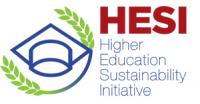Université du Littoral Côte d'Opale
Description
The approach developed for the first project was based on the observation of the surfaces reflecting the signals emitted by GPS radio navigation satellites. These signals are usually received by a bi-static radar system helping deduce some properties of the reflection surface, such as its height and humidity. These two parameters are essential for the study and monitoring of flood areas because they can monitor the rising of water and assess the water status (ability to absorb or to run off rainwater) observed surfaces . The challenge faced in this proposed project is the study and construction of a light simple instrument which can be carried by a drone. For this reason, the proposed instrument will be based on the principle of "Interference Pattern Technique" to measure the parameters observed.As far as the second project is concerned,each installation will be made from solar panels obtained from different technologies. These facilities will initially be autonomous from each other and connected to a particular building or parts of a different building. This structure should enable in a second moment their integration into a smart distribution electricity network, the "smart grid". For the third project, the energy generated from the water pumping will indeed be enhanced by two heat pumps and then transferred to the heating system of the building. In this framework, the University requested the GIS Campus of the Sea to conduct a study on the deployment of these renewable energies.The main objectives of the CIRCLE approach are: (1) identification of research needs, (2) development of scientific projects and (3) collaboration among researchers in charge of adaptation policies to climate change.The initiative started in 2013 and is still ongoing.
SDGS & Targets
Goal 7
Ensure access to affordable, reliable, sustainable and modern energy for all
7.1
By 2030, ensure universal access to affordable, reliable and modern energy services
7.1.1
Proportion of population with access to electricity
7.1.2
Proportion of population with primary reliance on clean fuels and technology
7.2
7.2.1
Renewable energy share in the total final energy consumption
7.3
7.3.1
Energy intensity measured in terms of primary energy and GDP
7.a
7.a.1
International financial flows to developing countries in support of clean energy research and development and renewable energy production, including in hybrid systems
7.b
By 2030, expand infrastructure and upgrade technology for supplying modern and sustainable energy services for all in developing countries, in particular least developed countries, small island developing States, and land-locked developing countries, in accordance with their respective programmes of support
7.b.1
Installed renewable energy-generating capacity in developing and developed countries (in watts per capita)
Goal 13
Take urgent action to combat climate change and its impacts
13.1
Strengthen resilience and adaptive capacity to climate-related hazards and natural disasters in all countries
13.1.1
Number of deaths, missing persons and directly affected persons attributed to disasters per 100,000 population
13.1.2
Number of countries that adopt and implement national disaster risk reduction strategies in line with the Sendai Framework for Disaster Risk Reduction 2015–2030
13.1.3
Proportion of local governments that adopt and implement local disaster risk reduction strategies in line with national disaster risk reduction strategies
13.2
Integrate climate change measures into national policies, strategies and planning
13.2.1
Number of countries with nationally determined contributions, long-term strategies, national adaptation plans and adaptation communications, as reported to the secretariat of the United Nations Framework Convention on Climate Change
13.2.2
Total greenhouse gas emissions per year
13.3
Improve education, awareness-raising and human and institutional capacity on climate change mitigation, adaptation, impact reduction and early warning
13.3.1
Extent to which (i) global citizenship education and (ii) education for sustainable development are mainstreamed in (a) national education policies; (b) curricula; (c) teacher education; and (d) student assessment
13.a
Implement the commitment undertaken by developed-country parties to the United Nations Framework Convention on Climate Change to a goal of mobilizing jointly $100 billion annually by 2020 from all sources to address the needs of developing countries in the context of meaningful mitigation actions and transparency on implementation and fully operationalize the Green Climate Fund through its capitalization as soon as possible
13.a.1
Amounts provided and mobilized in United States dollars per year in relation to the continued existing collective mobilization goal of the $100 billion commitment through to 2025
13.b
Promote mechanisms for raising capacity for effective climate change-related planning and management in least developed countries and small island developing States, including focusing on women, youth and local and marginalized communities
13.b.1
Number of least developed countries and small island developing States with nationally determined contributions, long-term strategies, national adaptation plans and adaptation communications, as reported to the secretariat of the United Nations Framework Convention on Climate Change
SDG 14 targets covered
| Name | Description |
|---|
Deliverables & Timeline
Resources mobilized
Partnership Progress
Feedback
Action Network


Timeline
Entity
Geographical coverage
More information
Countries

Contact Information
Reboul Serge , Mr.
